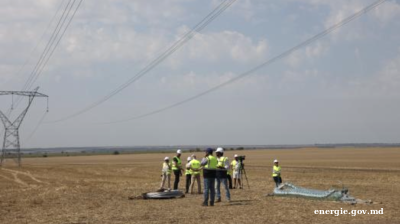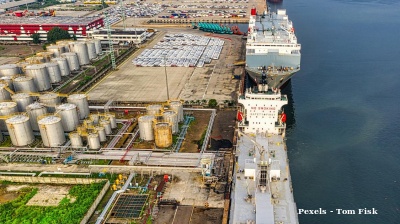India's gross sugar output is estimated to increase by about 15% in sugar season (SS) 2026 (October 2025 to September 2026), reaching about 35mn tonnes. This increase is due to the above-average monsoon, which has improved sugarcane acreage and yields in the main producing states such as Maharashtra and Karnataka.
According to a report by Crisil Ratings, the expected increase in production is likely to ease tightness in the domestic sugar supply. It also opens up the possibility of higher sugar diversion towards ethanol blending and could potentially revive sugar exports, subject to appropriate policy interventions.
In SS 2025, sugar mills faced a challenging environment due to high cane procurement costs, stagnation in ethanol prices, and subdued export opportunities. These factors weighed on the sector’s operating profitability, which declined by nearly 200 basis points to an estimated 8.7–9% during the fiscal year.
Looking ahead to fiscal 2026, sugar mills are expected to benefit from improved supply volumes and a potential increase in sugar diverted for ethanol blending. Operating margins are likely to recover slightly to around 9–9.5%, offering relief to sugar companies that experienced margin pressures in the previous year. This could provide some support to the credit profiles of sugar producers, especially integrated players.
An analysis of 54 sugar companies, which accounted for approximately INR700bn ($8.1bn) in revenue during fiscal 2025, indicates that despite rising cane prices—up 4.5% to INR355 per quintal for SS 2026—the benefits from higher output and ethanol volumes will be modest under the current pricing structure, Crisil said.
Ethanol diversion is projected to increase from around 3.5mn tonnes in SS 2025 to nearly 4mn tonnes in SS 2026, aided by the government’s 20% ethanol blending target. However, stagnant ethanol procurement prices continue to constrain profitability, even as sugar mills pivot towards ethanol as an alternate revenue stream to de-risk earnings.
Standalone sugar mills without distillery operations or cogeneration power sales remain especially vulnerable to these pricing and cost pressures, with limited scope for margin recovery.
On the pricing front, domestic sugar prices have remained steady at INR35–38 per kg this season. With production expected to be higher in the upcoming season, sugar prices are likely to stay range-bound. This will further limit the upside potential in miller profitability despite higher volumes.
Export volumes, which were restricted to 1mn tonnes in SS 2025 due to domestic supply concerns, could be maintained at similar levels in SS 2026. The increase in output and an expected opening inventory of approximately two months of domestic consumption provides a sufficient cushion. However, any decision on easing export curbs will depend on ethanol diversion policies, domestic availability, inflation trends, and global price movements.
Inventory levels at the end of fiscal 2026 are expected to remain similar to the previous year. This should help sugar companies avoid a spike in working capital requirements, despite expanded ethanol production. With capital expenditure expected to remain confined to routine modernisation, the overall debt burden of integrated sugar mills is likely to stay under control.
Improved profitability, stable debt levels, and lower working capital needs are expected to lift the sector’s interest coverage ratio to around 3.0 times in fiscal 2026, up from 2.7 times the previous year. This improvement could offer some recovery in credit metrics following the pressures seen in fiscal 2025.
For the remainder of the year, major variables for the sugar industry include the spatial and temporal distribution of monsoon rainfall, its impact on cane productivity, timely revisions to ethanol prices, and clarity on export policy in line with international price trends.
Kharif or summer sowing area up by 2.79mn hectares
Parallel to developments in the sugar sector, India's kharif sowing has shown strong progress. As of July 18, 2025, the total area under kharif crops reached 70.83mn hectares, reflecting an increase of 2.79mn hectares compared to the same period in 2024, according to data from the Department of Agriculture & Farmers’ Welfare.
Rice continues to lead kharif planting activity, with an area of 17.67mn hectares, a 1.95mn hectare increase over last year. This growth is attributed to favourable rainfall patterns and the timely supply of inputs across major rice-producing states.
Pulses have been sown across 8.20mn hectares, a modest rise from 8.01mn hectares last year. However, within this category, tur and urad have seen reductions of 0.16mn and 0.21mn hectares respectively, while moong and moth bean have recorded gains of 0.28mn and 0.26mn hectares.
Coarse cereals have also registered a significant expansion, reaching 13.37mn hectares—1.6mn hectares more than the same period last year. Maize has emerged as the major contributor with a 0.95mn hectare increase, followed by bajra, which gained 0.69mn hectares. Jowar witnessed marginal growth, while ragi and other small millets saw slight reductions in coverage.
Oilseeds have experienced a setback, with total sowing down to 15.68mn hectares, a drop of 0.6mn hectares compared to 2024. This decline is primarily due to a reduction in soybean planting, which fell by 0.73mn hectares to 11.17mn hectares. Groundnut and sesamum, however, recorded minor gains.
Other notable trends include sugarcane sowing, which edged up slightly to 5.52mn hectares, and a minor decline in jute and mesta cultivation, which now stand at 0.55mn hectares combined.
Features

World GDP forecasts raised, but US slowdown anticipated - Fitch
Global growth is now forecast to be 2.4% in 2025, up 0.2pp since June but a sizeable slowdown from 2.9% last year and below trend.

Moldova’s dramatic energy sector transformation
Chisinau ended decades of dependence on Russia in just four years — but will the upcoming general election derail the remaining reforms?

Local elections loom in Georgia
Georgia’s October 4 municipal elections are already mired in controversy amid a partial opposition boycott and mounting state repression, as major international observers refuse to participate.

Iran's nuclear materials 'Under rubble of attacks', Foreign Minister claims
Iran's Araghchi says that the only nuclear site currently accessible is the Russian-controlled Bushehr nuclear power plant in his meeting with the IAEA.


